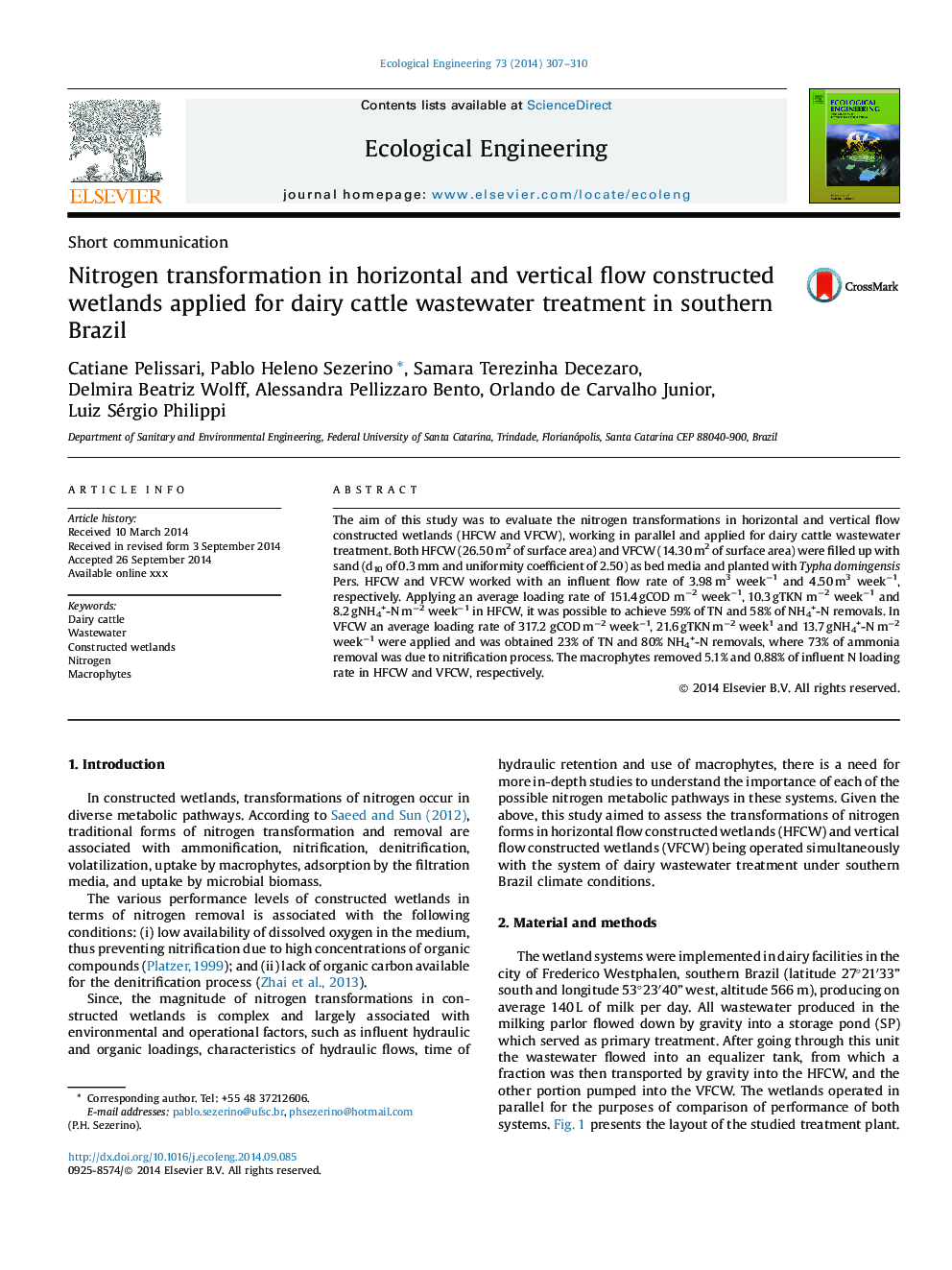| Article ID | Journal | Published Year | Pages | File Type |
|---|---|---|---|---|
| 6301931 | Ecological Engineering | 2014 | 4 Pages |
Abstract
The aim of this study was to evaluate the nitrogen transformations in horizontal and vertical flow constructed wetlands (HFCW and VFCW), working in parallel and applied for dairy cattle wastewater treatment. Both HFCW (26.50Â m2 of surface area) and VFCW (14.30Â m2 of surface area) were filled up with sand (d10 of 0.3Â mm and uniformity coefficient of 2.50) as bed media and planted with Typha domingensis Pers. HFCW and VFCW worked with an influent flow rate of 3.98Â m3 weekâ1 and 4.50Â m3 weekâ1, respectively. Applying an average loading rate of 151.4Â gCOD mâ2 weekâ1, 10.3Â gTKN mâ2 weekâ1 and 8.2Â gNH4+-NÂ mâ2 weekâ1 in HFCW, it was possible to achieve 59% of TN and 58% of NH4+-N removals. In VFCW an average loading rate of 317.2 gCODÂ mâ2 weekâ1, 21.6Â gTKNÂ mâ2 week1 and 13.7Â gNH4+-NÂ mâ2 weekâ1 were applied and was obtained 23% of TN and 80% NH4+-N removals, where 73% of ammonia removal was due to nitrification process. The macrophytes removed 5.1% and 0.88% of influent N loading rate in HFCW and VFCW, respectively.
Related Topics
Life Sciences
Agricultural and Biological Sciences
Ecology, Evolution, Behavior and Systematics
Authors
Catiane Pelissari, Pablo Heleno Sezerino, Samara Terezinha Decezaro, Delmira Beatriz Wolff, Alessandra Pellizzaro Bento, Orlando de Carvalho Junior, Luiz Sérgio Philippi,
